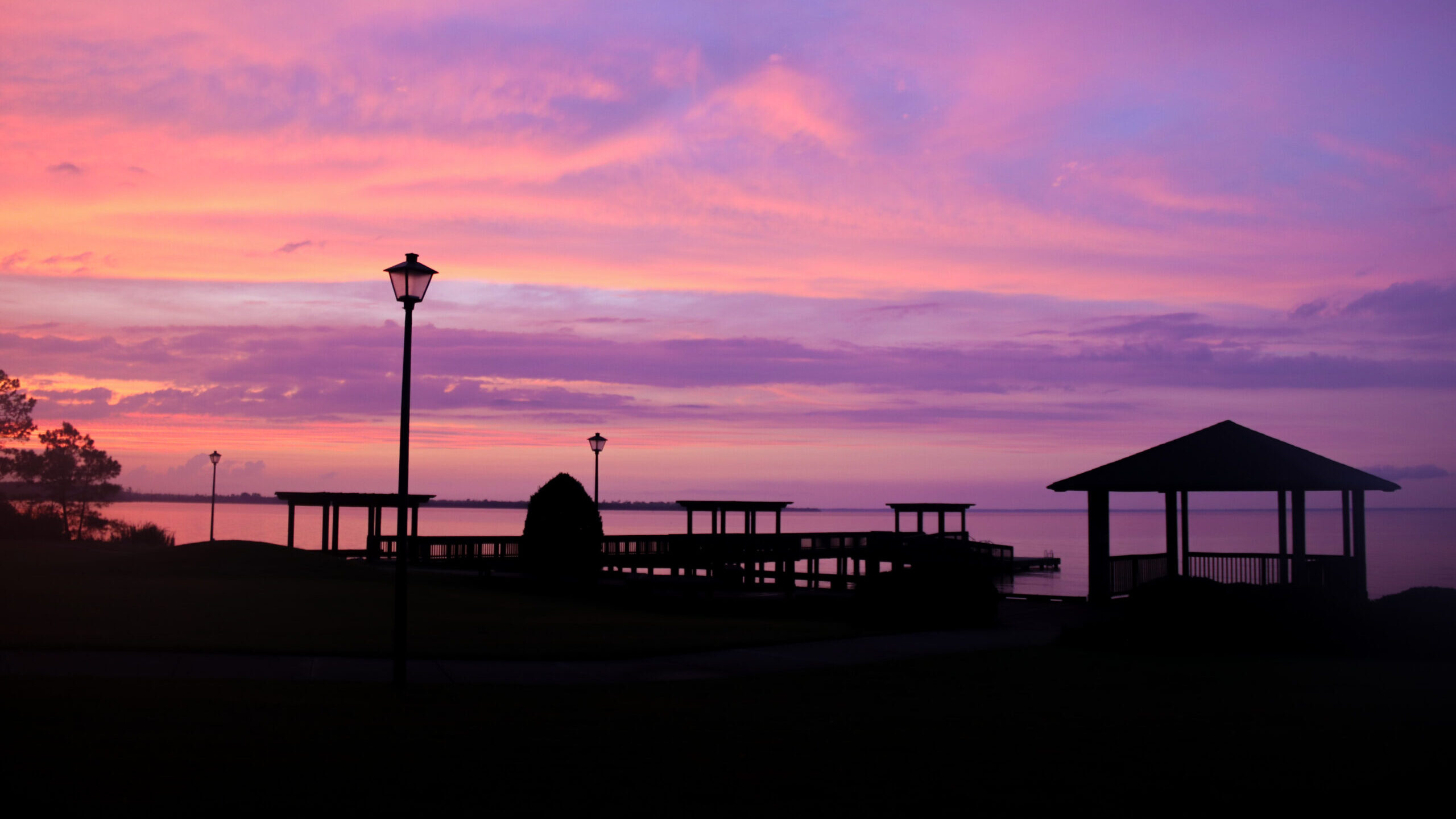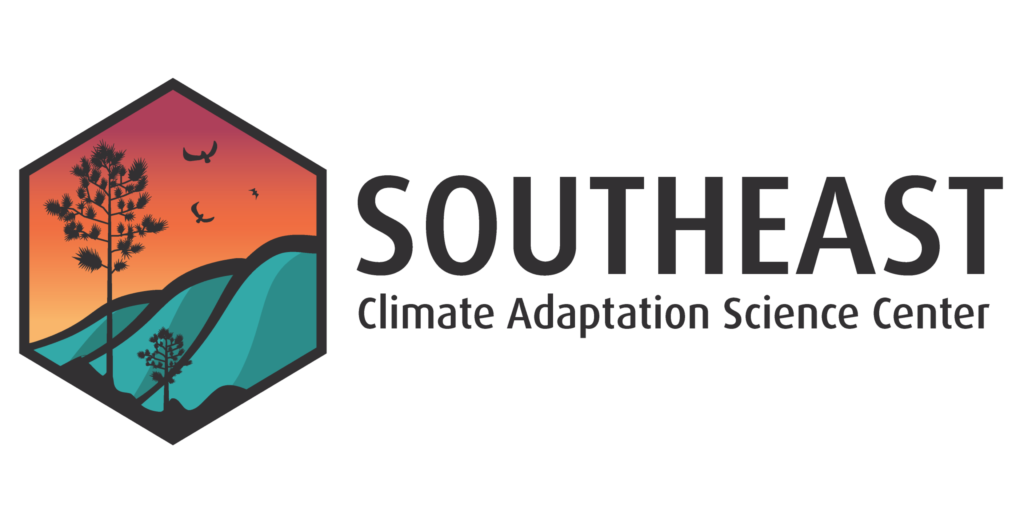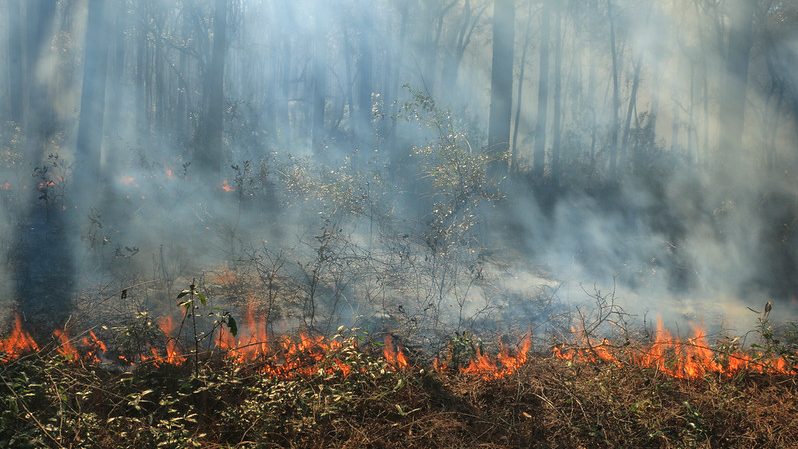August 2023 Newsletter


August 2023 Newsletter
Welcome to the Southeast Climate Adaptation Science Center’s August 2023 Newsletter.
For news and upcoming events related to the Southeast Climate Adaptation Science Center, subscribe to our monthly newsletter
SE CASC News | Resources | Publications | Tribal News | Partner News | Webinars | Events | Opportunities

Southeast Climate Adaptation Science Center News
Join us TODAY at 11 AM ET for a virtual SE CASC Science Seminar, Tribal Climate Adaptation Priorities and Opportunities for the Southeast CASC, presented by Dr. Steph Courtney (USET-SE CASC) and Dr. Casey Thornbrugh (USET-SE CASC). Learn more and register.
North Carolina State University has been awarded a new cooperative agreement from USGS to host the SE CASC Consortium for the next five years. See the announcement.
Last week our 2023-2024 Global Change Research Fellows and Consortium students attended the 2023 Climate Adaptation Science Retreat and Field Intensive on the Albemarle Peninsula. Read a summary.
Check out our new web page featuring SE CASC Data & Tools. Learn more.
Join the SC CASC, SE CASC, and USFS for a virtual workshop, Extreme Disturbances and Climate Change: Threats to the Southeast, Sept. 26, 9AM ET. Learn more and register.
Watch the recording of the July 20 SE CASC Science Seminar, Scaling up Urban Growth Projections with FUTURES, presented by Anna Petrasova. Learn more.
Science Communications Intern TeCora Galloway interviewed 2020-21 Global Change Fellow Ámbar Torres-Molinari about her research on American eels. Read her web post.
Consortium researchers from Duke University request input to a comprehensive list of databases containing information on nature-based solutions projects and effectiveness; please add any additional databases not already included in the Google doc.
Michelle Jewell’s photograph of 2022-23 Global Change Fellow Emily Nastase ringing a Henslow’s sparrow earned the 1st place spot for faculty/staff in the Envisioning Research Contest! Read the press release.
2021-22 Global Change Fellow Lauren Pharr was recently featured in a NCWF article, Diversity, Inclusion, and Woodpeckers: An Interview with Governor’s Conservation Award Recipient and Avian Ecologist Lauren D. Pharr. Lauren is also lead author to Using citizen science data to investigate annual survival rates of resident birds in relation to noise and light pollution; Faculty Affiliates Caren Cooper, Christopher Moorman, and Jelena Vukomanovic are co-authors. View web post here.
2016-2017 Global Change Fellow Paul Taillie is co-author to Sea level rise adaptation pushes an insular endemic rodent closer to extinction.
Consortium PI Paul Armsworth is co-author to The cost of buying land for protected areas in the United States.
Faculty Affiliate Lincoln Larson is co-author to Greenness and equity: Complex connections between intra-neighborhood contexts and residential tree planting implementation.
Faculty Affiliate Elsa Youngsteadt is co-author to Urbanization Shapes Insect Diversity.
Conservation Corridor: Can high-quality corridors buffer wildlife from climate extinction?
Project Spotlight
Understanding Prescribed Fire Management in the Context of Climate Change and Landscape Transformation

Prescribed burning is a primary tool used to reduce wildfire risk and manage ecosystems to achieve a range of ecological, economic and societal goals. This project collected and analyzed data from prescribed fire managers across the full historic range of longleaf pine in the Southeast. Researchers documented the overlap (or disconnection) between perceptions of how urbanization and climate change will affect prescribed burning opportunities vs. projected changes in fire, climate and landscape development. This project will provide crucial data on prescribed fire management that will help natural resource managers make science-based decisions about management priorities and adapt to future changes. The research was led by PI John Kupfer (Univ. of SC). Learn more.
Resources
Climate at a Glance was developed by NOAA to provide real-time analysis of monthly temperature and precipitation data across the contiguous U.S. Learn more.
I Am A…Science Careers Book For Kids. USGS is using art to inspire kids about science through an activity book. Learn more.
Seedlot Selection Tool is a web-based mapping application designed by USFS to help natural resource managers match seedlots with planting sites based on climatic information. Learn more.
U.S. Drought Monitor. The U.S. Drought Monitor depicts the location and intensity of drought across all 50 states, as well as Puerto Rico, U.S. Virgin Islands, and U.S.-Affiliated Pacific Islands. Learn more.
USGS Science in the American Territories is a geonarrative exploring the science in the U.S. island territories, including Puerto Rico and the U.S. Virgin Islands.
In the Media
The microorganism that shaped humanity | iai News
White House cautiously opens the door to study blocking sun’s rays to slow global warming | ClimateWire
Addressing expanding concerns over forest carbon credits key to mitigation success | Forests News
A Tree Grows in Birmingham | Inside Climate News
As climate warms, US allows moving species threatened with extinction as a last resort | Phys.org
Tree Keepers: Where Sustaining the Forest Is a Tribal Tradition | Yale Environment 360

Notable Publications
Mangrove Forests and Climate Change
With mangrove forests located in the dynamic coastal zone, they are expected to be heavily impacted by climate change. Mangrove colonization, long-term stability, and reproduction at the site scale are controlled by a range of physical processes. While attention is often focused on response to sea-level rise, these systems are exposed to a variety of climate change stressors, such as increased storminess and waves, more dynamic and unpredictable precipitation patterns, and increases in air and sea surface temperatures. This study expressed that individual climate change stressors can have positive and negative impacts on mangroves and associated ecosystem functions. While climate change stressors are often studied individually, they are not expected to act in isolation. Therefore, researchers adapted a stressor interaction framework previously suggested for coral reefs. They present the benefits of expanding mangrove and climate change research to identify key synergistic and antagonistic interactions between climate change stressors. Link to article.
Move, migrate, or tolerate: Quantifying three tactics for cold- water fish coping with warm summers in a large river
Larger rivers in the downstream portion of watersheds tend to get the highest summer temperatures and are more tightly coupled to regional climate conditions. As a result, these rivers are more sensitive to climate warming. Cold-water species residing in these areas are faced with three options to cope with the seasonally warm temperatures: tolerate warm temperatures, move to cooler areas within the large rivers, or migrate beyond the seasonal home range to cooler portions of the river network upstream. This study tracked coastal cutthroat trout habitat use across the Willamette River. It was determined that 89.8% of the fish tolerated higher temperatures; 6.5% moved to cool floodplain alcoves, and 3.7% migrated to a cool tributary. Larger fish preferred cold-water refuge habitats rather than to tolerate the warm temperatures. More research is needed to study how the relative expression of these tactics vary depending on heat stress or non temperature attributes. Link to article.
Reducing personal climate risk to reduce personal climate anxiety
Through all the negative ongoing and future climate risks faced by society, it is not unusual to develop personal climate anxiety. Overcoming this anxiety can be difficult because most climate anxiety reduction efforts focus on coping rather than actually removing the cause of anxiety. This Comment shares that personal climate anxiety can be reduced most effectively and sustainably through reducing personal climate risks. One can control their personal climate vulnerability through self-initiating adaptation actions. This can be as simple as moving valuable items to higher shelves to avoid flood damages or implementing urban garden techniques to prepare for drought-related food insecurity. Cognitive science suggests that pursuing self-initiated climate adaptation efforts is a climate-anxiety-reducing action with a high return on personal investment. Link to article.
Trophic rewilding can expand natural climate solutions
As the goal to hold global temperature rise at 1.5°C becomes virtually impossible, natural climate solutions are being deployed to enhance carbon sequestration. The Paris Agreement includes a plan to achieve a net zero future through renewable energy generation, a halt to deforestation, and land conversion. However, these tactics alone will struggle to cap the warming at 2°C. Therefore, a negative emissions approach must be pursued to remove and store 500 Gt of atmospheric carbon by 2100. Natural climate solutions have been identified as a cost-effective and safe measure for capturing excess carbon and storing it within terrestrial and aquatic ecosystems. Natural biogenic chemical processes with terrestrial and marine ecosystems remove up to 50% of all human-caused CO2 emissions annually. This paper explores how protecting and restoring wild animals and their functional roles can enhance natural carbon capture and storage. Link to article.
Coastal vegetation and estuaries are collectively a greenhouse gas sink
Anthropogenic activities are contributing to the rise in greenhouse gas (GHG) concentrations, such as carbon dioxide (CO2), methane (CH4), and nitrous oxide (N2O). As a result, the global terrestrial CO2 sink is hindered by biogenic CH4 and N2O, thus transitioning the terrestrial biosphere from a net CO2 sink to a net GHG source. It is evident that inland waters are now an atmospheric greenhouse gas source. Coastal ecosystems, however, release and absorb GHG leading to uncertain net radiative balance. This paper compiles data and observations across 738 sites from articles published between 1975 and 2020. It was determined that coastal vegetation uptake of CO2-equivalent decreased by 23-27% because of CO2 outgassing. Total methane and nitrous oxide levels along the coast decrease coastal carbon dioxide sinks by 9-20%. Regions, such as Southeast Asia, North America, and Africa, serve as critical GHG gas sink hotspots and therefore should be explored to improve coastal carbon uptake. Link to article.

Tribal News
Visit USET Climate Change Headlines for updates on information regarding climate science events, funding opportunities, best practices, and highlights from across the USET region.
Amah Mutsun Land Trust is hiring a Cultural Burning/Fire Program Manager, Coastal & Ocean Stewardship Program Manager, and Development and Communications Manager. Initial review of applications will begin on Aug. 28.
Feed Seven Generations will host the 2nd Annual Food Sovereignty Symposium: Native Grown and Gathered on Oct. 3 in Suquamish, Washington. Learn more and register here.
BIA Branch of Tribal Climate Resilience has announced the fiscal year 2023 Annual Awards Program solicitation. Applications are due Oct. 13. Learn more.
NOAA is offering funding to restore tribal priority fish passage through barrier removal. Learn more and apply by Nov. 8, 2023.
The Chickasaw Nation is hiring a Sustainability Science Manager. Learn more.

Regional Partner News
NOAA: $240 Million Available for Transformational Habitat Restoration and Coastal Resilience.
SECAS: New developments in understanding coastal marsh change in the Southeast.

Webinars
Find more upcoming events in our calendar.
Aug. 24 | 11am-12pm | SE CASC Science Seminar – Tribal Climate Adaptation Priorities and Opportunities for the Southeast CASC
Aug. 31 | 9pm-10pm | USGS Public Lecture – Indigenous Communities in the United States: Leaders in Climate Adaptation
Sep. 7 | 9am-10am | Climate & Conservation Coffee
Sep. 14 | 3pm-4pm | RESTORE Act: Science-Based Solutions for a Changing Gulf
Sep. 19 | 10am-12pm | Florida Water and Climate Alliance Webinar
Upcoming Events
Aug. 28-31 | Planning for a Changing Climate – USFWS/NOAA | Shepherdstown, WV
Sep. 7-8 | NW RISCC Invasive Species and Climate Change Symposium | Virtual
Sep. 10-15 | Southwest Tribal Climate Action Summit | Chinle, AZ
Oct. 15-18 | Southeast Association of Fish and Wildlife Agencies Annual Conference | Corpus Christi, TX
Oct. 25-27 | Midwest Climate Resilience Conference | Duluth, MN
Nov. 1-3 | South Central CASC 2023 Fall Science Meeting | Lubbock, TX
Dec. 11-15 | AGU23 Wide. Open. Science | San Francisco, CA & virtual

Opportunities
Student Announcements
North Carolina Water Resource Research Institute is hiring a part-time Community Water Education Intern. Learn more and apply by Aug. 28.
Hiring Announcements
National Park Service is hiring a Supervisory Natural Resources Specialist/Ecologist stationed in Fort Collins, CO. Learn more and apply by Aug. 28.
University of Washington Climate Impacts Group is hiring a Climate Resilience Specialist. Applications will be reviewed starting Aug. 28. Learn more.
Adaptation International is seeking a Regional Resilience Catalyst. Priority will be given to applications received on or before Sep. 15. Learn more.
UCAR is hiring up to three ASP Rising Voices, Changing Coasts Postdoctoral Fellows. Learn more and apply by Sep. 18.
USGS Mendenhall Research Fellowship Program if offering a Research Opportunity on quantifying impacts of landslide disasters on communities in the United States. Learn more and apply by Nov. 1.
USDA Climate Hub and Univ. of California-Davis are seeking a postdoc to work on adapting forests to climate change for reforestation. Learn more.
Funding Opportunities
NFWF requests proposals for their 2023 Killer Whale Conservation Program. Pre-proposals are due Aug. 31 and full proposals are due Oct. 31. Learn more.
USDA Seeks Proposals for Joint Chiefs’ Landscape Restoration Partnership. Learn more and apply by Sep. 4.
NOAA is offering funding for the Ocean-based Climate Resilience Accelerators program. Learn more and apply by Sep. 11.
The NOAA Ocean Acidification Program (OAP) has launched the FY24 Education Mini-grant Program. Letters of intent are due Sep. 15. Learn more.
The application deadline for NOAA’s Restoring Fish Passage through Barrier Removal Grant Program is Oct. 16. Learn more.
NOAA seeks to establish a Climate Ready Workforce for Coastal and Great Lakes States, Tribes, and Territories Initiative. Submit letters of intent by Nov. 30.
The Inflation Reduction Act offers many funding opportunities. Explore the Investing in America Open Funding Opportunities here.
Miscellaneous
NAF will take place in Saint Paul, Minnesota from May 14-16, 2023. Call for proposals will open on Aug. 28. Learn more.
The draft prospectus of the First National Nature Assessment is now open for public comment. Submit your comments to the USGCRP Public Contribution System by Sep. 18.
NOAA has released a Request for Information (RFI) on Equitable Climate Service Delivery. Responses are due on or before Sep. 21. Learn more.
- Categories:
